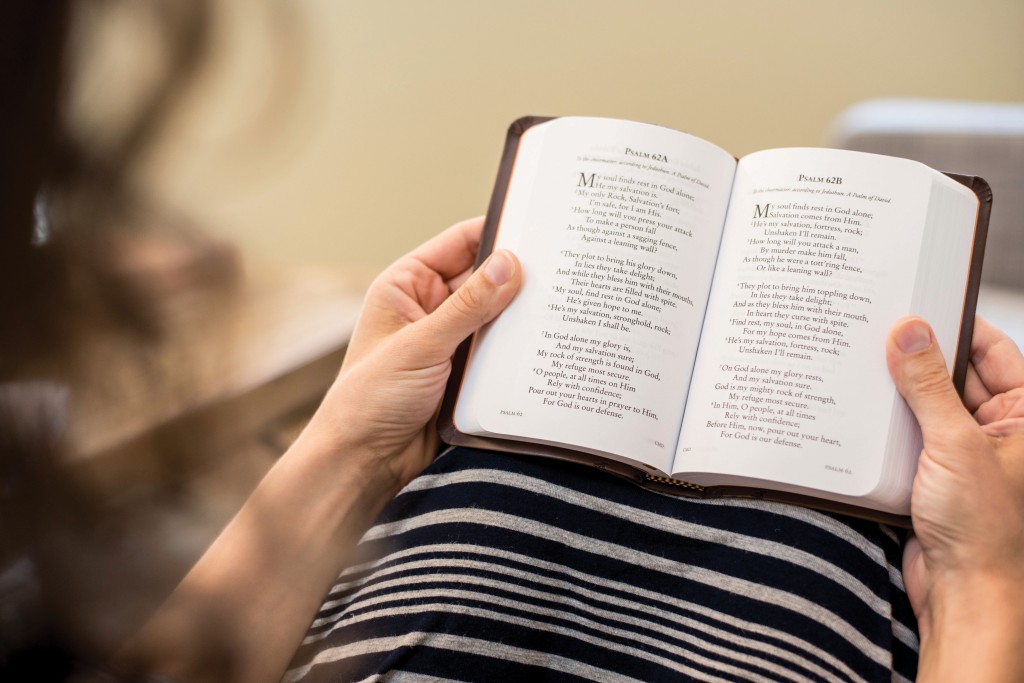You have free articles remaining this month.
Subscribe to the RP Witness for full access to new articles and the complete archives.
The Book of Psalms is quoted 79 times in the New Testament. There are also 333 allusions to the Psalms (Greek New Testament, United Bible Societies, “Index of Quotations,” and “Index of Allusions and Verbal Parallels”). Christ speaks of Himself using the Psalms. And certainly, the apostles preach Christ using the Psalms. Finally, we are familiar with studies of Christ in the Psalms. This emphasis is important.
Nevertheless, I propose an additional perspective to the Psalms, especially among those of us who regularly sing psalms in public worship. My suggestion is that we consider how we see ourselves in the Psalms. To begin, only 14 psalms carry a title tying them to a specific incident in the life of David. If the exact origin and history of each psalm were important, the Holy Spirit would have given us this information.
Also, 55 of the psalms include in their title, “for the choir director.” In other words, these psalms were composed for use by the Levitical choirs in the temple. In the New Testament, “we are the temple of the living God” (2 Cor. 6:16). We have been made a kingdom of priests (Rev. 5:10). As such, we are the choir. The Psalms have been composed for us, for our benefit, and for our acts of praise.
In addition, it is quite clear that other psalms were utilized by God’s people. Psalms 113–118, the Egyptian Hallel, were sung by God’s people during Passover. These psalms composed the hymn sung by Jesus and the apostles after the institution of the Lord’s supper (Matt. 26:30; Mark 14:26). The 15 Songs of Ascents, Psalms 120–134, were sung by God’s people going up to Jerusalem for the required feasts. Psalm 92 is a “Song for the Sabbath day” (v. 1). Jewish records indicate certain psalms were designated for other days of the week. God’s people sang these psalms; they were composed for them.
Where do we see ourselves in the Psalms? “The peculiar value of the Psalms turns on this, that they give us an insight into the heart of the Old Testament saints—that they disclose their feelings to us in the most sacred and hallowed moments of their life—that they open for us a deep insight into the more hidden wonders of the true religion” (E.W. Hengstenberg, Commentary on the Psalms, Appendix, 3:vii). In other words, we see ourselves in the very fabric of the Psalms.
Calvin puts it as follows, “I have been accustomed to call this book, I think not inappropriately, ‘An Anatomy of all the Parts of the Soul’; for there is not an emotion of which any one can be conscious that is not here represented as in a mirror” (“The Author’s Preface,” Commentary on the Book of Psalms, 1:xxxvii). Where do we see ourselves in the Psalms? We see ourselves in the peace and panic, in the joy and anguish, in the hope and despair, and in the praises and cries of the Psalms. We are there in all the mixed emotions that find expression in the Psalms. In reading the Psalms, in praying the Psalms and in singing the Psalms we find ourselves represented as in a mirror.
The Psalms are not just a record of things long ago and far away. They are an up-to-date, divine guide for the expression of our own emotions. We rightly see Christ in the Psalms. More importantly, we should grasp the real genius of the psalter and see ourselves in the Psalms. We should sing them as our songs expressing our hearts’ longings and desires.
Dennis J. Prutow | reformedvoice.com/rptsprof
